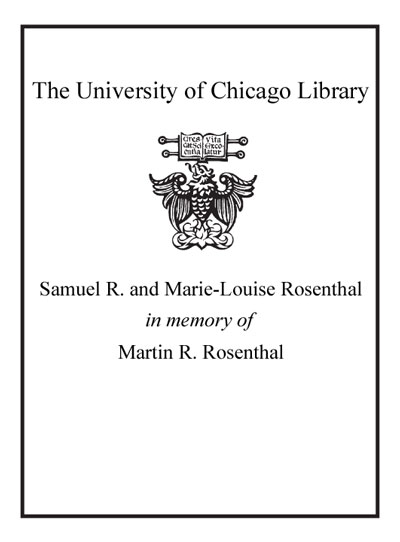Nothing is said : utterance and interpretation /
Saved in:
| Author / Creator: | Jary, Mark, 1964- author. |
|---|---|
| Edition: | First edition. |
| Imprint: | Oxford ; New York, NY: Oxford University Press, Incorporated, 2022. ©2022 |
| Description: | ix, 212 pages ; 22 cm |
| Language: | English |
| Subject: | |
| Format: | Print Book |
| URL for this record: | http://pi.lib.uchicago.edu/1001/cat/bib/12935030 |
MARC
| LEADER | 00000cam a2200000 i 4500 | ||
|---|---|---|---|
| 001 | 12935030 | ||
| 008 | 220531t20222022enk b 001 0 eng d | ||
| 005 | 20230412213650.5 | ||
| 035 | 9 | |a (GOBI)99993257889 | |
| 040 | |a YDX |b eng |e rda |c YDX |d UKMGB |d OCLCF |d YDX |d GSU | ||
| 020 | |a 0192863185 |q hardcover | ||
| 020 | |a 9780192863188 |q hardcover | ||
| 035 | |a (OCoLC)1322048729 | ||
| 050 | 4 | |a P325 |b .J37 2022 | |
| 082 | 0 | 4 | |a 401/.43 |2 23 |
| 100 | 1 | |a Jary, Mark, |d 1964- |e author. | |
| 245 | 1 | 0 | |a Nothing is said : |b utterance and interpretation / |c Mark Jary. |
| 250 | |a First edition. | ||
| 264 | 1 | |a Oxford ; |a New York, NY: |b Oxford University Press, Incorporated, |c 2022. | |
| 264 | 4 | |c ©2022 | |
| 300 | |a ix, 212 pages ; |c 22 cm | ||
| 336 | |a text |b txt |2 rdacontent | ||
| 337 | |a unmediated |b n |2 rdamedia | ||
| 338 | |a volume |b nc |2 rdacarrier | ||
| 504 | |a Includes bibliographical references and index. | ||
| 520 | 3 | |a While there has been much debate between minimalists and contextualists about the nature of what is said, both sides assume that some such notion must be appealed to in modelling linguistic communication. This book challenges that assumption, arguing that from the perspective of basic linguistic interpretation, nothing is said. To do this, the book draws a distinction between linguistic communication proper and behavioural communication, and then draws on Situation Theory and Relevance Theory to develop a model of the former that makes no appeal to any notion of what is said. Rather, what is said is introduced later as part of a reflective competence underlying sophisticated behavioural communication, such as irony and insinuation. The notions of implicature employed in these two types of communication are shown to be distinct, and to play different explanatory roles. With the division between linguistic and behavioural communication established, the book goes on to reconsider a number of areas of linguistic investigation that have received considerable attention in recent years. These include lexical modulation, scalar implicature, lying vs. otherwise misleading, and the correct characterisation of assertion and asserted content. The final chapter of the book relates the ideas developed to the discursive-commitment framework proposed by Robert Brandom. In doing so it considers, among other things, the notion of public language in relation to linguistic theorising, and the developmental relationship between language use and theory of mind. | |
| 650 | 0 | |a Semantics. | |
| 650 | 0 | |a Pragmatics. | |
| 650 | 7 | |a Pragmatics. |2 fast |0 (OCoLC)fst01074579 | |
| 650 | 7 | |a Semantics. |2 fast |0 (OCoLC)fst01112079 | |
| 929 | |a cat | ||
| 999 | f | f | |s 39062ded-6c9c-4c0b-8360-2cfac864012a |i 4d23ff73-81a0-42f2-a6bf-3780339b778e |
| 928 | |t Library of Congress classification |a P325.J37 2022 |l JRL |c JRL-Gen |i 13072815 | ||
| 927 | |t Library of Congress classification |a P325.J37 2022 |l JRL |c JRL-Gen |e MARO |b 118322182 |i 10470010 | ||

